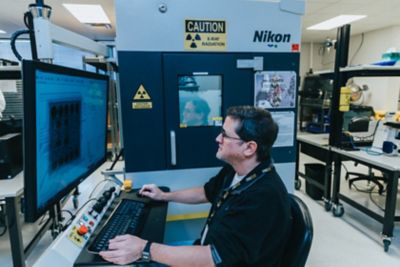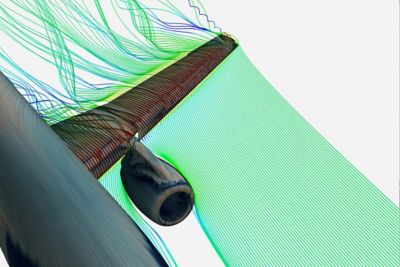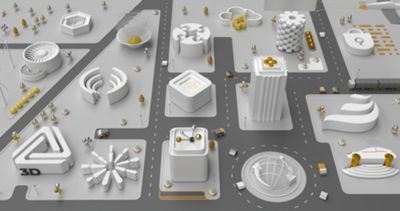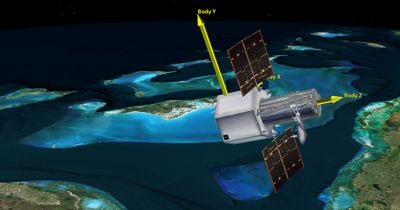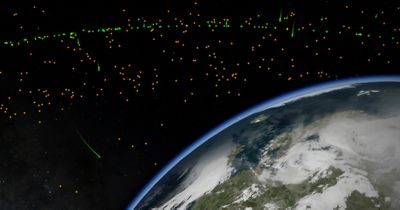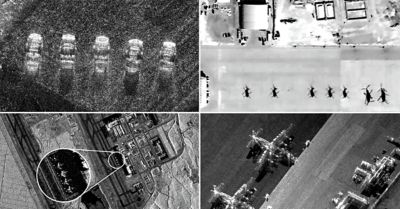-
United States -
United Kingdom -
India -
France -
Deutschland -
Italia -
日本 -
대한민국 -
中国 -
台灣
-
Ansys is committed to setting today's students up for success, by providing free simulation engineering software to students.
-
Ansys is committed to setting today's students up for success, by providing free simulation engineering software to students.
-
Ansys is committed to setting today's students up for success, by providing free simulation engineering software to students.
-
Contact Us -
Careers -
Students and Academic -
For United States and Canada
+1 844.462.6797

Initial orbit determination (IOD) has a rich, storied history that includes contributions by scientific luminaries, such as Johann Kepler, Isaac Newton, Leonhard Euler, Pierre-Simon de Laplace, and Karl Friedrich Gauss. The IOD techniques developed by these scientists and others typically assume that the space object moves along an approximately two-body orbit about a celestial body. This was fine for most of the space age, but there is now increasing demand for IOD methods that can track objects in cislunar space. Many of these cislunar objects are in three- or four-body orbits that cannot be accurately approximated by the two-body dynamics assumed by the classic IOD techniques.
Another limitation of classic IOD techniques is that many of them require specific types of measurement data to be available — for example, angle or range data. These data sources are often available for cooperatively tracked satellites, but they can be more difficult to gather for uncooperative space objects, including pieces of space debris and spacecraft launched by other governments.
One method of tracking uncooperative space objects involves intercepting signals of opportunity that originate from these objects using ground-based radio telescopes. These signals can be processed into one-way Doppler, time-difference-of-arrival (TDOA), and frequency-difference-of-arrival (FDOA) measurements. However, classic IOD techniques cannot process these measurement types.
Using the Collocation Object Capability
To address these challenges, we added the collocation object capability to Ansys Orbit Determination Tool Kit (ODTK) orbital measurement processing software. This new ODTK object implements an innovative IOD technique that was originally developed in 2023 by University of Colorado researchers Casey Heidrich and Marcus Holzinger. The IOD technique uses the well-known SNOPT (Sparse Nonlinear OPTimizer) program to perform a least-squares fit on a user-configurable collection of measurements of the space object being tracked. At the same time, SNOPT uses a node-based collocation technique to enforce a four-body dynamical model on the space object that ensures that the point-mass gravity of the Earth, Moon, and Sun are all modeled accurately.
You can configure a collocation object using the attributes displayed in figures 1 and 2. “MeasurementSelection” attributes can be used to choose which observations of the space object are used by the least squares fit. Any valid ODTK measurement type can be processed using the collocation object, including Doppler, TDOA, and FDOA.
Collocation attributes can be used to control the number of nodes and the initial guess used by SNOPT. Expert users can also tailor the SNOPT optimization parameters directly if needed. The output attributes in Figure 2 enable you to view the collocation results in terms of the space object’s position, velocity, and covariance at each node.
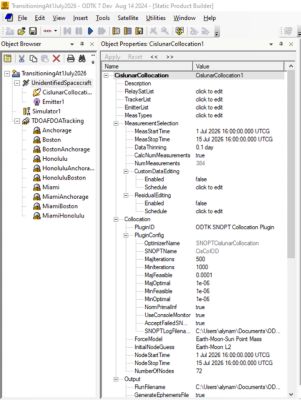
Figure 1. The input configuration attributes for the new Ansys Orbit Determination Tool Kit (ODTK) orbital measurement processing software collocation object
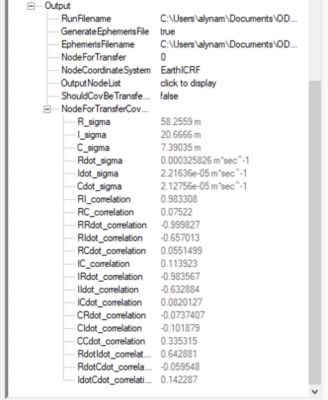
Figure 2. The output attributes for the ODTK collocation object
After a collocation object completes a successful run, there are several ways to verify the results. The quality of the results of a collocation run can be verified by inspecting the magnitude and distribution of the residuals in a collocation residuals plot, which is one of a few new data products we added to the ODTK Static Product Builder. Each collocation run produces a SNOPT log file that can be inspected to see how well SNOPT was able to reduce the least squares “merit function.” Finally, the resulting orbit can be graphed in Ansys Satellite Tool Kit (STK) digital mission engineering software to see if it matches a plausible cislunar orbit.
Figure 3 depicts two STK satellites whose orbits are visually indistinguishable. The red satellite is the “truth” orbit of a satellite that was used to simulate the observations that were used by the collocation object. This satellite is modeled to be in a cislunar orbit called an L2 halo orbit. The yellow satellite is the estimate of the satellite’s orbit that was generated by the collocation object. The fact that the estimated orbit aligns so well with the truth orbit provides evidence that the collocation run was successful.
Learn more about how digital mission engineering software can help you.
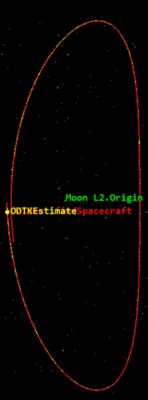
Figure 3. An estimate of a satellite’s orbit (yellow) created by the ODTK collocation object plotted against the satellite’s “truth” orbit (red).
The Advantage Blog
The Ansys Advantage blog, featuring contributions from Ansys and other technology experts, keeps you updated on how Ansys simulation is powering innovation that drives human advancement.







